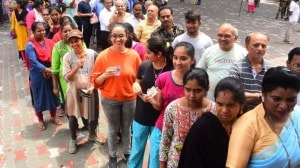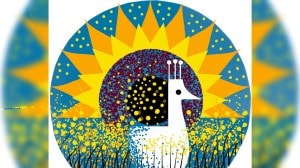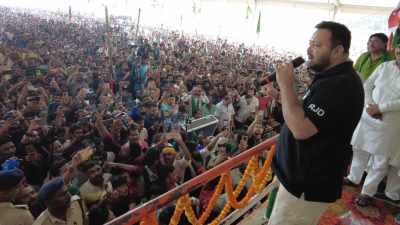Stay updated with the latest - Click here to follow us on Instagram
Roorkee University brought Dal hope; was never enforced
One of the many attempts to save Dal Lake was the Conservation and Management Plan for the Dal Nagin Lake undertaken by the Alternate Hydro Energy Centre of University of Roorkee.
Before the J-K High Court took the custody of Dal Lake as a last resort to conserve it,there were many attempts to save the once magnificent lake. Among them was the Conservation and Management Plan for the Dal Nagin Lake undertaken by the Alternate Hydro Energy Centre of University of Roorkee. Faced with acute problems of the Dal-Nagin Lakes,the Union Ministry of Environment and Forests in 2000 assigned the job of preparing a Detailed Project Report for Dal and Nagin Lakes conservation and management.
According to this report,the major problems facing the lake were identified as shrinkage of the lake area due to encroachment,excessive sediment entry due to catchment degradation,increased pollution because of entry of untreated sewage and solid waste from the periphery as well as from the houseboats and hamlets within the lake,excessive weed growth and reduction of fresh water entry into the lake.
A multidisciplinary team consisting of experts from the University of Roorkee and outside experts and organisations had prepared a detailed project report covering different aspects and had proposed a conservation and management plan which was implementable,economical,eco-friendly and sustainable. The plan included works related to catchment treatment and management,sewerage and sewage treatment,solid waste management,deweeding and dredging and shore line development and other related issues.
The total financial outlay for the proposed conservation and management plan for Dal and Nagin lakes over a period of three years had been worked out to be rupees 162.87 crores.
Here is a note on proposals contained in the Detailed Project Report:
1) Catchment Management Plan:
According to the report the main objective of the catchment management plan is to check soil erosion and degradation process in the catchment area and thus arrest and bring down the sediment and nutrient flow to the lake to the minimum. The proposed measures included
a) Restoration of degraded forests through plantation and in situ moisture conservation.
b) Fuel,wood and fodder plantation of indigenous exotic species.
c) Drainage line treatment through properly designed structures.
d) Forage production,pasture development and on-farm fodder development.
2) Sewerage and Sewage Treatment:
According to the report,the Dal Lake receives waste waters from fifteen drains and inflow from Telbal Nallah,the main source of water inflow to the Dal Lake. Two alternative plans for sewage treatment were envisaged. One proposal conceptualised a centralised sewage treatment where in all the waste would be collected by sewers (gravity mains) and trunk sewers with 15 intermediate pumping stations (IPS) and a main pumping station,at Brarinambal.
However,this system of sewage treatment was found to have some difficulties. So a decentralized system was preferred and had been proposed. The report said that this would do away with a large component of pumping and trunk sewers. The bulk of the sewage would flow by gravity and pumping will be resorted to only when there is no alternative. The report said that the Sewage Treatment Plants (STP) would be provided at six sites. The treated effluent of three STPs would flow out of the lake and the rest after tertiary treatment would be discharged into the lake (around 40%).
3) Solid Waste Management:
According to the report,a survey of the then sewage treatment practice indicated that the Solid Waste Management System was not well organized. It was found that the waste from the lake had a considerable amount of biodegradable component it had been recommended to adopt composting on a pilot basis for the waste from within the lake. It was proposed by the report that till the results of the pilot study were available,the interim measure of landfill may be continued. Guidelines for sanitary landfilling had also been provided.
Other proposals included provision of proper community bins,Garbage Gobblers etc. and the design of the same as well as the areas where they could be provided had been indicated by the report.
4) Resettlement and Rehabilitation Plan:
The report had developed five options for the shifting of lake dwellers people living within Dal. While the larger objective was seen to shift a major proportion of the population,the report said that following criteria should be used:
a) Choosing hamlets which cause greater pollution/degradation or need to be vacated for aesthetic considerations.
b) Identifying the families willing to shift and making arrangements for them only.
c) Determining and securing resources required like finances,residential plots and agricultural land,institutional loans,settling people in business and handicrafts etc.
d) The number of people to be shifted in any phase should be in accordance with the resources secured.
e) Relief and Rehabilitation carried out to the satisfaction of shifted people,even if their number is small,is likely to result in the reduction of the population in the lake and ultimate achievement of the objective of lake conservation.
The Detailed Project Report for the conservation and management of Dal-Nagin Lakes includes various other components like captive power for STPs; Research,Monitoring and Data Management Programme; Public Awareness Plan; Impact Assessment and Institutional Development and Plan Implementation Strategies.
Meanwhile,the officials of Lakes and Waterways Development Authority (LAWDA),an agency for the conservation of water bodies,which had to implement the report,say that the implementation of the Roorkee University Report is in progress. The report was an action plan,it had various components,LAWDA is working on them, said Vice Chairman of LAWDA,Irfan Shah. We have implemented 50 per cent of the proposals, he adds. However,he refuses to give further details.
The implementation of the Detailed Project Report for the conservation and management of Dal-Nagin Lakes had started in 2005.







